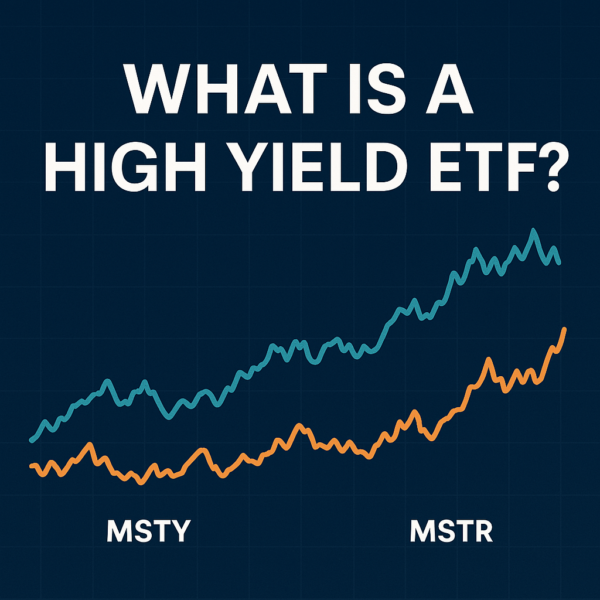What is a Small Cap Growth ETF?
While it might sound redundant, a small cap growth ETF is a great investment vehicle for growth-minded investors. Many people associate small caps with growth. A growth-focused ETF brings investors a basket of small caps poised to break out. Instead of betting on one or two companies, an ETF affords small cap appreciators the opportunity to reap the benefits of multiple big-ticket growers. Plus, ETFs mitigate the risk of investments that don’t live up to the hype.
Small cap growth ETFs attract investors who want a small hedge against risk. They’re still willing to bet on the success of small cap companies, but want cross-sector exposure or similar. Luckily, there are small cap ETFs of all types—by sector, by product, by size, and numerous other commonalities. Choosing the best one comes down to a fundamental understanding of what these investment products are.

Small Cap Growth ETF Definition
A small cap growth fund is exactly what it implies. It’s comprised of companies with a small market cap, expected to grow for a plethora of reasons. In some cases, these ETFs are sector-specific. They might, for example, focus on small renewable energy companies that will benefit from the coming shift to sustainable fuels. In other cases, they’re companies that have international growth prospects or new intellectual property in the pipeline. Regardless of what powers the growth, these small companies won’t be small for long.
An ETF is the perfect vehicle to observe burgeoning companies. It hedges the risk of volatility that comes with small caps, while offering broad exposure to up-and-coming companies. In the case of growth-minded investing, there’s even more reason to choose ETFs. There’s no telling which small cap is going to make the leap. An ETF offers exposure to a group. Strong growth from even one or two companies can push the entire ETF higher.
The Best Small Cap Growth ETFs By Performance
The most successful small cap growth ETFs are the ones run by major brokerages and funds. Since institutional investors can’t own more than 10% of a company’s voting shares, they opt to manage ETFs of small caps instead. This allows them to benefit from exposure to small caps, and gives institutions more in selecting companies with high ROI potential for the fund. To-date, some of the best-performing small cap growth funds include:
- Vanguard Small Cap Growth ETF (VBK)
- iShares Russell 2000 Growth ETF (IWO)
- iShares Morningstar Small-Cap Growth ETF (ISCG)
- Vanguard Russell 2000 Growth ETF (VTWG)
- Motley Fool Small-Cap Growth ETF (MFMS)
Most established funds rotate up-and-coming companies in as winners achieve a larger market cap. In this way, the focus of the fund stays on small caps. Many investors prefer this strategy of cashing out on winners early to pick the next up-and-comer. It goes hand-in-hand with a buy low, sell high strategy.
What Happens When Small Cap ETFs Grow?
Most ETFs are passive products that track a major index—usually the Russell 2000 or similar. If a small cap company grows to the point of exiting the index, ETFs adjust automatically. Most indices also reindex at points throughout the year. Passive ETFs will rebalance to follow them, which would see certain stocks leave or join the fund.
In the rare case of actively managed ETFs, fund managers may choose to rebalance funds to be more in-line with the philosophy of a small cap growth mindset. For example, if XYZ Company’s stock has been flat for 24 months—or merely paced the market—the fund manager may choose to remove it. Likewise, if a small cap company goes through a revitalization and comes out swinging, it might be a hot addition to a fund.
Usually, small cap ETFs grow as their assets do. Funds will buy or sell shares of companies represented to maintain an aggregate benchmark. They’ll also reevaluate the assets themselves as indices update or company performance changes.
Are Small Cap Growth ETFs Safe?
For the most part, small cap growth ETFs are a safe investment. The nature of ETFs downplays the nature of small cap volatility. While growth stocks tend to have their own share of volatility, it falls under the risk mitigation of an ETF.
The major thing to keep in mind when investing in a growth ETF is that surges in both directions can be common. Small companies in growth hacking mode can run up their stock price quickly and cool off just as fast. If the ETF features enough of these companies or is weighted too heavily in a particular sector, it can feel like a rollercoaster. At the end of the day, so long as returns outpace the market average, the fund is doing its job.
The Bottom Line on Small Cap Growth ETFs
The name is everything you need to know about small cap growth ETFs. They offer the upside of small cap companies that are growth-minded. And, they do it in a basket approach that mitigates the risk of only owning one or two stocks. They’re great for investors who believe in the exponential growth of good companies or strong sectors, but who are risk averse to buying a lottery ticket.
To stay up-to-date with the latest ETF analysis, sign up for the Libery Through Wealth e-letter below. The team at Liberty Through Wealth provides tips to building wealth through smart investment opportunities.
The best way to invest in a small cap growth ETF is to find one that meets your specific investing criteria. It could be stocks in a specific sector or a group of companies in a specific country. Then, find an ETF that’s risk-appropriate for you. Just be mindful of expense ratio—it can be higher for growth-focused small cap ETFs.
Read Next: What is a Small Cap Value ETF?





